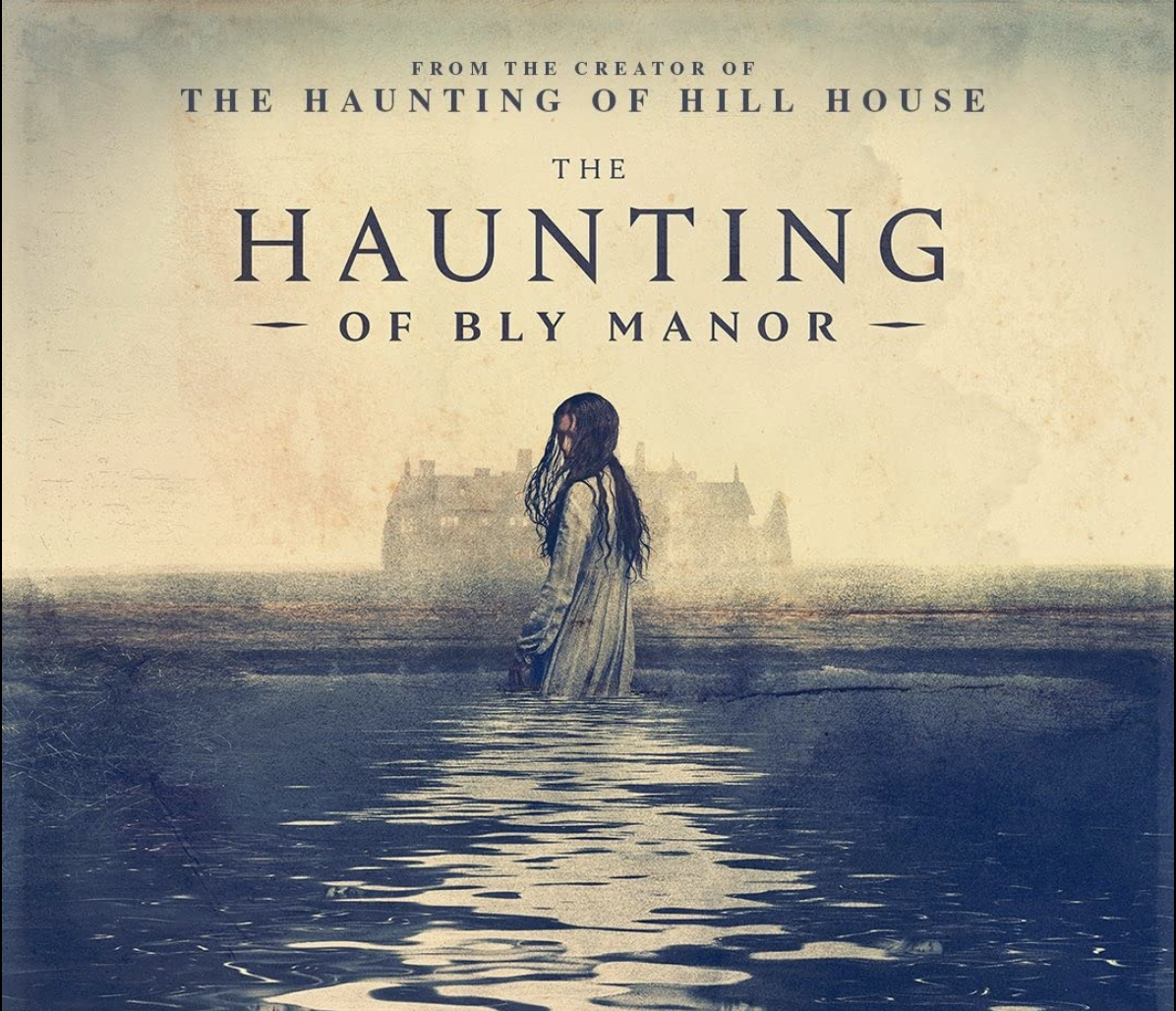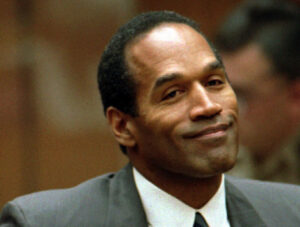Mild Spoiler Warning: I vaguely discuss some details that give away parts of what happens toward the end of this show. It’s nothing in depth and nothing too explicitly obvious, but tread lightly if you haven’t yet seen it and seek to avoid even subtle hints about its big reveals.
Even as a huge fan of The Haunting of Bly Manor’s anthology series predecessor, The Haunting of Hill House (2018), I hadn’t realized the new season had been released until my Tik Tok ‘for you’ page was inundated with fans posting thousands of video edits of the characters or their personal takes on the show. Once I saw these and successfully avoided most spoilers, I knew I was in for an emotionally-jarring treat. Now I can safely say that this assumption was incredibly accurate for many reasons, but chiefly one: I’m still thinking about the show constantly, even days after finishing it.
With Bly Manor, renowned horror filmmaker Mike Flanagan has triumphed again, taking the genre and transforming it into something unique and suitable for binge watching. The show’s premise is outwardly simple but becomes increasingly complex as time goes on, unfolding elaborately before viewers’ eyes. Old, big houses have secrets, and uncovering them slowly but surely is Bly’s specialty. The show begins with a woman (Carla Gugino) attending a wedding rehearsal dinner and telling a “ghost story” to the other guests. Throughout the series, this woman narrates this story as viewers see it unfold onscreen. Perhaps the show’s biggest, albeit somewhat predictable, surprise is the revelation of this narrator’s identity in the final episode.
The story she tells follows fan-favorite Dani Clayton (Victoria Pedretti), a young American woman who becomes a live-in nanny for a pair of mysterious orphans in the English countryside. Pedretti’s performance is iconic and never misses the mark. From the character’s practically trademarked speedwalk, which has become a trend to mimic jokingly on social media, to her complete and total American awkwardness when it comes to making tea, Dani is charming and loveable, the perfect au pair. In her character there is both levity and deep sadness as we learn more and more about her backstory and her personal ghost, her ex-fiancé Edmund (Roby Attal).
A primary reason for fans’ love of Dani is her romantic relationship with manor gardener Jamie (Amelia Eve), which provides quality queer representation that is at once heartwarming and heartwrenching. Though the show falls face-first into some common tropes—such as “lesbians love plants” or the “bury your gays” trope—it manages to make the relationship meaningful and powerful despite them. For example, though the flower shop scenes do feel reminiscent of things like Imagine Me & You (2005) in some ways, they also fit Jamie’s characterization. They are a logical step rather than the inclusion of an overused stereotype. Dani and Jamie do not feel like caricatures of queer people written for straight audiences. They feel real, and their story is not an overdramatized coming out story or a tale of great strife about being queer. Rather, they are just meant to be, and in the words of Jamie, “I reckon that’s enough for me.”
Dani and Jamie’s is not the only love story in the show. Tales of love and possession are the axis on which the world of Bly Manor turns. The possessive relationship between the children’s late au pair, Rebecca Jessel (Tahirah Sharf) and Peter Quint (Oliver Jackson-Cohen), the family’s chauffeur, drives much of the ghostly side of the plot. Housekeeper Hannah Grose (T’Nia Miller) and cook Owen Sharma (Rahul Kohli) show a lighter side to budding love that quickly turns to loss. These relationships are part of the foundation for the show’s huge emotional impact alongside topics of family and loss.
The familial relationship emerges both in traditional family structures and in chosen families. Some of the best, most robust scenes in the show occur at group dinners with the children and the people that stand in for their family—the house’s staff. With an estranged uncle (Henry Thomas) and parents who have passed, the children must find their family elsewhere in Dani, Jamie, Owen, and Hannah. Seeing the way these people care for each other and for Miles (Benjamin Evan Ainsworth) and Flora (Amelie Bea Smith) was touching. It certainly helps that the children delivered incredible and emotional performances to match those of their older costars.
In fact, their ability to bring calmness in place of what should be fear is part of what gives the show such an eerie vibe. These children are simply accustomed to the ghosts at the house and are even in the midst of a nefarious game with some of them that nearly ends in the children’s demise. To Flora, everything going on is for the most part “perfectly splendid,” even though to Dani and the audience the situation is rather terrifying and daunting.
Perhaps the scariest thing that Bly Manor makes viewers grapple with, though, is the question of what happens to us in and after death. The show proposes a kind of dream-hopping, jumping between the memories that shaped our lives. We see many characters deal with this kind of unreality and try to maintain their personality and relationships even in death until a final sacrifice frees them. But, what is the difference between being alive and dead at a cursed place like Bly Manor? There are, after all, characters we don’t even realize are already dead alongside those that are more obviously ghosts.
Of course, the show at times delves into a more typical kind of horror. Another spooky aspect of the show is the hidden ghosts, present in the background of shots, that viewers may not even realize are there. The beauty of these images is that, whether you are conscious of their presence or not, they create a subliminal feeling of unease and immerse you in the experience of what living in a haunted manor may really be like. Their presence also emphasizes the nature of the house’s curse, which is complex and long-lasting, tied to its 17th century history. Searching for them is also great fun and gives viewers a completely new way to watch or rewatch the show.
In one of the season’s later episodes, we see the origins of the house, presented in black and white. Without spoiling much, I can say summarily that this story involves terminal sickness and a troubled and stubborn woman, Viola Willoughby (Kate Siegel), who would go on to drag others into her post-death need to haunt the grounds of Bly Manor. The idea of this curse is not 100 percent original. Like Hill House, Bly Manor is loosely based off of a classic horror story: Henry James’ novel The Turn of the Screw. The novel follows a governess who cares for haunted children at Bly Manor, and while the show takes many liberties, the general idea is kept the same. Additionally, the character of Edmund, Dani’s ex-fiancé, is based off of another Henry James work: a short story, “Sir Edmund Orme.”
Explaining all the twists, turns, and references the show makes would take days or possibly weeks. The script is rich and full of meaningful callbacks to its own episodes, moments from The Haunting of Hill House, other media (including Jamie’s Mary Poppins-related nickname for Dani), and its source material. It is chock-full of literary merit and superb entertainment and is truly one of the best TV shows, Netflix-made or otherwise, that I have seen in a long time.
I will note that though Bly has been all the rage on platforms like Tik Tok and YouTube, Hill House may still have a leg up in terms of quality and relatability. Both shows stick with you, not only in frights and sleepless nights, but also in life lessons learned and love stories shared. Their characters are loveable and feel incredibly real; each show makes you feel like you have gained some new friends. That being said, there is something about Hill House’s focus on growing up and (re)connecting with family that speaks so directly to personal experience, especially for high school and college students on the precipice of adulthood. It’s hard to directly compare the two and harder still to pick a favorite, but somehow, Hill House as a whole just sits with me more. That’s probably why I rewatch it on a practically bimonthly basis, though I’m sure I will be doing the same with Bly Manor in the months and years to come.
If you take nothing else about The Haunting of Bly Manor away from this long-winded, loving discussion of it remember this—the show is at its core a brilliant tale of love, sacrifice, fear, and hope, rather than just another simple ghost story. A quote from the very first episode puts its central takeaway best: “To truly love another person is to accept that the work of loving them is worth the pain of losing them.”





